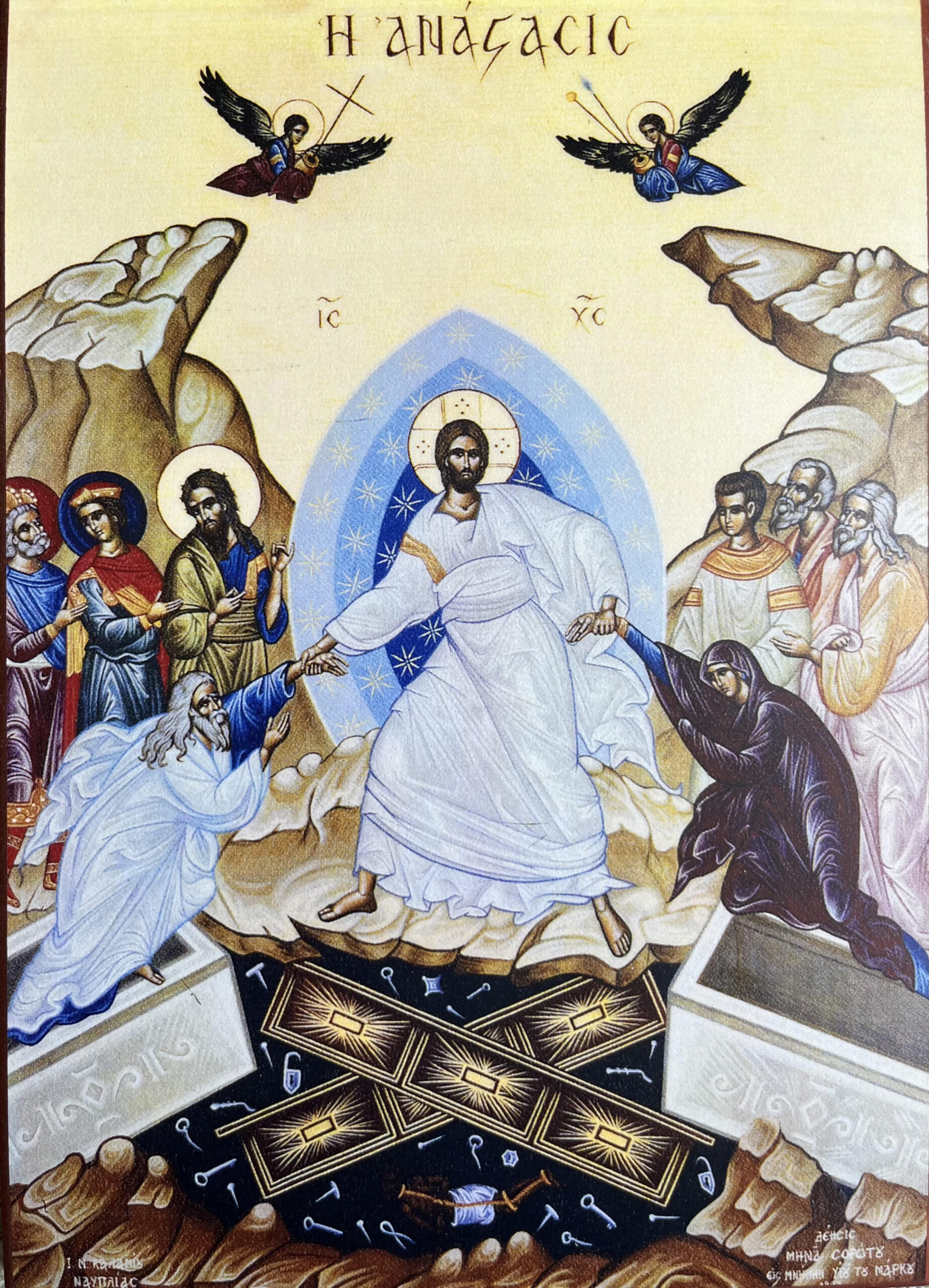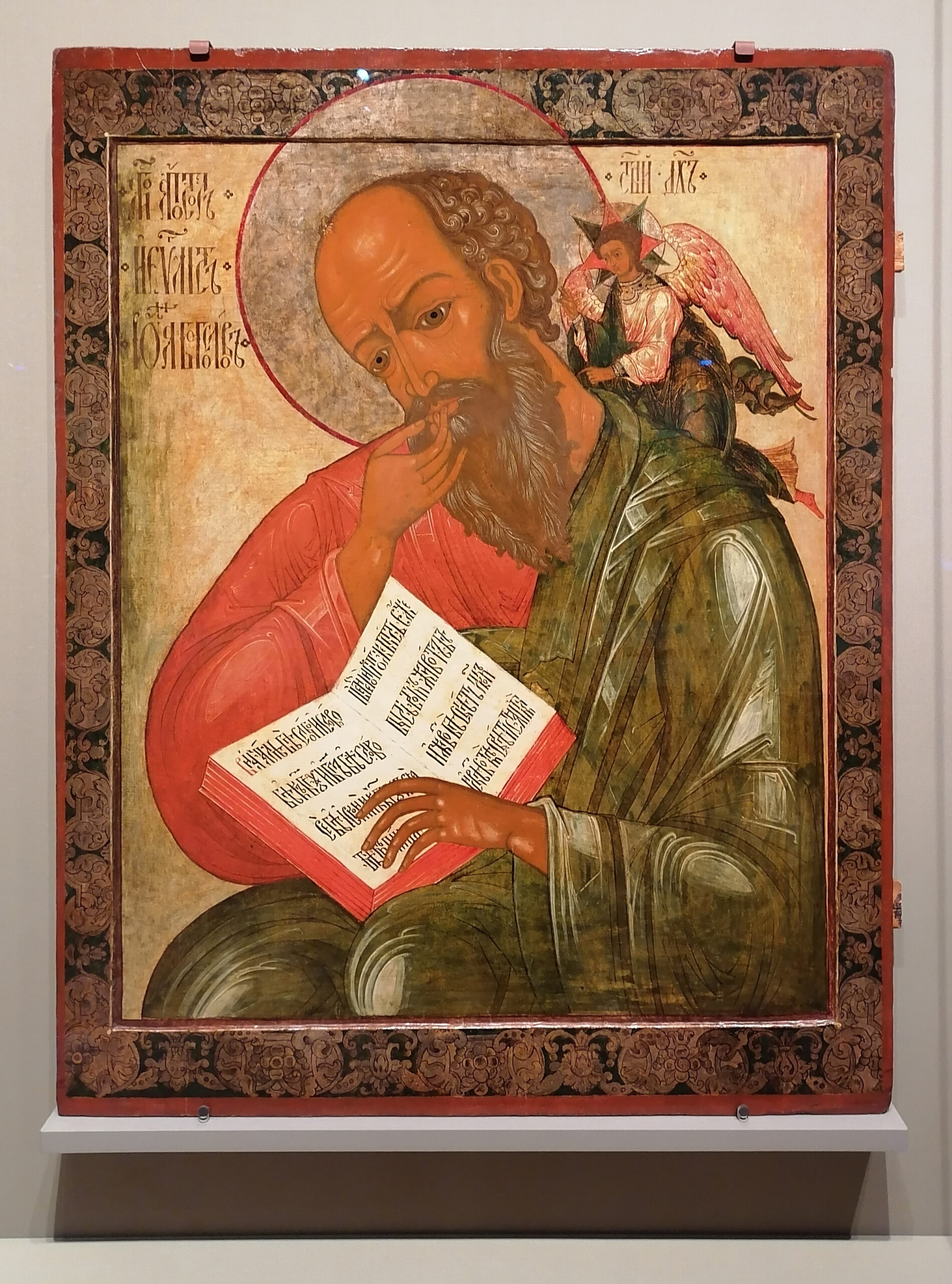It was wondrous to behold the Maker of Heaven and Earth hanging on the Cross; to see the sun darkened, the day changing again into night, and the Earth giving up bodies of the dead from their graves. With them, we worship You, Save us, O Lord.
9th Hour, Royal Hours, Good Friday Morning, Trans. by Fr. George Papadeas
—
And behold, the curtain of the temple was torn in two, from top to bottom; and the earth shook, and the rocks were split; the tombs also were opened, and many bodies of the saints who had fallen asleep were raised, and coming out of the tombs after his resurrection they went into the holy city and appeared to many. When the centurion and those who were with him, keeping watch over Jesus, saw the earthquake and what took place, they were filled with awe, and said, “Truly this was the Son of God!”
Matthew 27:51-54
In both Jewish and Byzantine history, there has been a tradition of hours in the day, which correspond to the hours of daylight. The first hour is the sunrise, the third hour is mid-morning, the sixth hour is midday, the ninth hour is mid-afternoon, and the twelfth hour is sunset. In the monastic tradition, there are services celebrated as each of the hours—the first hour at sunrise, the third hour at mid-morning, the sixth hour at midday, the ninth hour in the midafternoon, and at the twelfth hour, the vespers for the following day is offered.
Three times a year, the hours are read all together, without waiting for their respective intervals. These occasions are on the Eve of the Nativity, Eve of Theophany, and the Eve of the Resurrection, in other words, on Good Friday morning. In most churches, the hours begin in mid-morning, with the first hour offered a couple of hours later than where it would have otherwise been celebrated, the third hour is appropriate placed in regards to time, and the sixth and ninth hours are celebrated a few hours early.
The Royal Hours are traditionally attended only by a few people, which makes it a very historically accurate service. Only the Virgin Mary and the beloved disciple John stayed at the foot of the cross.
The person in charge of a crucifixion was a centurion, an officer in the Roman army who was in charge of one hundred soldiers. (Remember the word “century” means one hundred years, so a centurion was in charge of one hundred soldiers). The centurion was a man who was very powerful and who struck fear into people. And it was a centurion who presided over the execution of Christ.
His name was not known in the Bible, though he has been given the name “Longinus.” The “Longi” was the word for “spear”. We don’t know if this was his real name, a nickname, or a name attached to him after the crucifixion. We know that after Christ died on the cross, a soldier, possibly the centurion himself, pierced His side with a spear and out flowed blood and water. We also know that a number of “cosmic” events took place at the time of the crucifixion. The whole sky became dark for three hours. An earthquake took place. The curtain of the temple was torn in two. And dead people came out of their tombs alive.
In Matthew’s account, we read that the centurion and those who were with him said that “truly this was the Son of God.” (Matthew 27:54) In other words, the centurion agreed with those around him, that Jesus was the Son of God. In Luke’s account, we read that “when the centurion saw what had taken place, he praised God, and said, ‘certainly this man was innocent!’” (Luke 23:47) As a Roman, who was obviously neither Jewish nor Christian, this was noteworthy itself. What he had witness caused him to praise God. In Mark’s account, his confession is the most powerful. In Mark 15:39, we read that “when the centurion, who stood facing Him, saw that He thus breathed His last, he said, ‘Truly this man was the Son of God!’” In Mark’s account, he took the lead in confessing Jesus as the Son of God.
We read in Matthew 28 that after the Resurrection, the Jews bribed the Roman soldiers to tell people that the disciples came and stole the body of Jesus. Longinus, who had possibly also been involved with guarding the tomb, did not go along with this plan and instead preached about the Resurrection of Christ. He stopped being a centurion, was baptized and became a Christian. The Romans heard about the former centurion, now a devout disciple, and wanted to kill him. Longinus went to the Romans willfully and disclosed that he was the centurion they were looking for. Eventually he was beheaded.
The lesson of St. Longinus is a profound one. We know of many saints who started out as sinners. Saint Peter denied Christ and he is the rock on which Christ founded the Church. Saint Paul was persecuting Christians, as well as killing them, and he is regarded, along with Saint Peter, as the greatest of the Apostles. Saint Longinus presided over the death of the Son of God—He helped kill Christ! What could be more of an egregious sin than that?! And yet he repented and became a saint. The lesson of Saint Longinus is that we can all become saints, no matter what we’ve done, when we repent of our sins and believe in Christ. If St. Longinus can be a saint, then anyone can. If God can forgive him, anyone who comes to God in repentance can be forgiven. If there was salvation for him, then there is certainly hope for you and me.
When the thief beheld the Author of Life hanging on the Cross, he said, “If He, who was crucified with us , was not God incarnate, the sun would not have hidden its rays, neither would the earth have quaked with trembling. But, all-forebearing Lord, remember me in Your Kingdom.”(9th Hour, Royal Hours, Good Friday Morning, Trans. by Fr. George, Papadeas)
Don’t give up and don’t despair, salvation is still on the table for any of us, no matter who we are and what we’ve done. Saint Longinus is proof of that!

